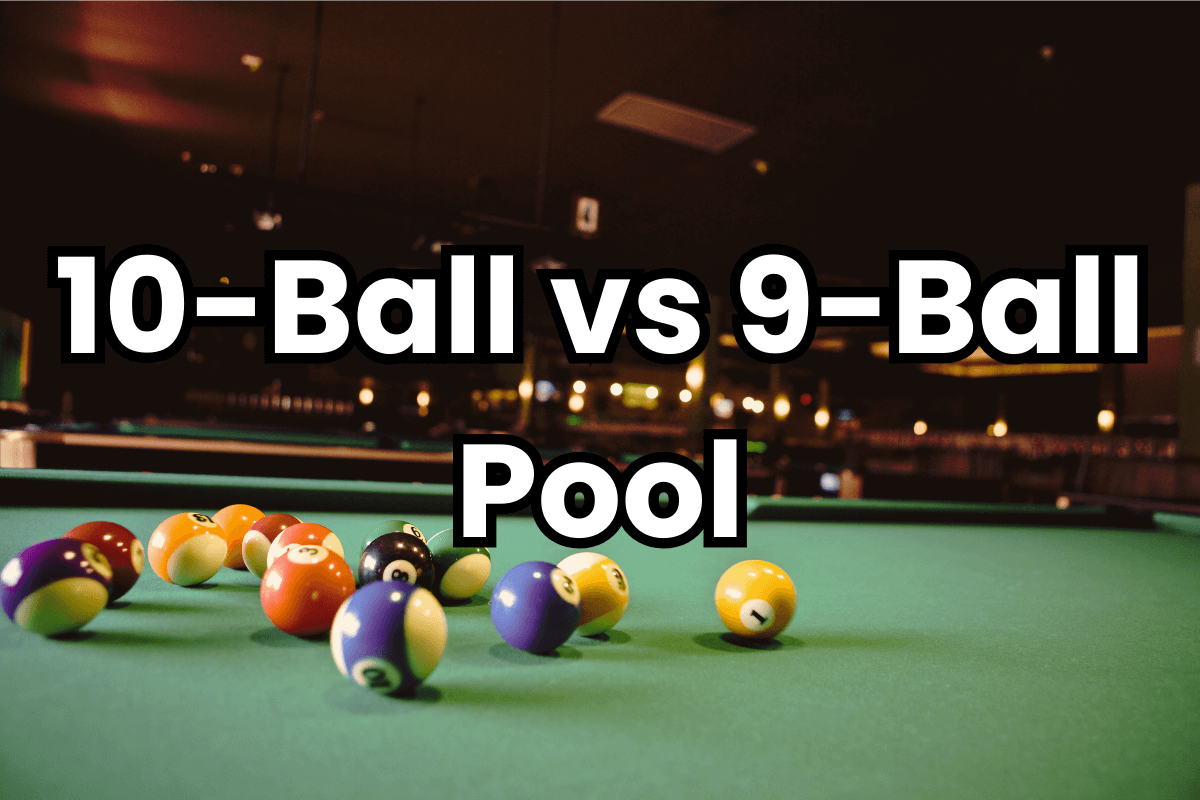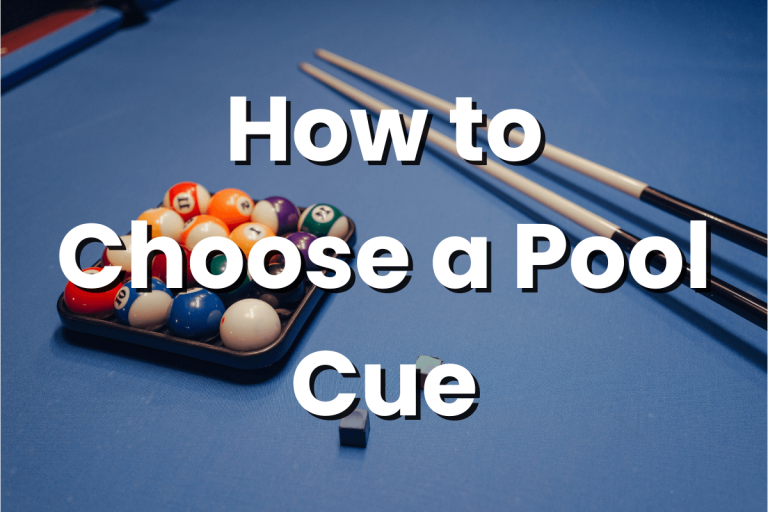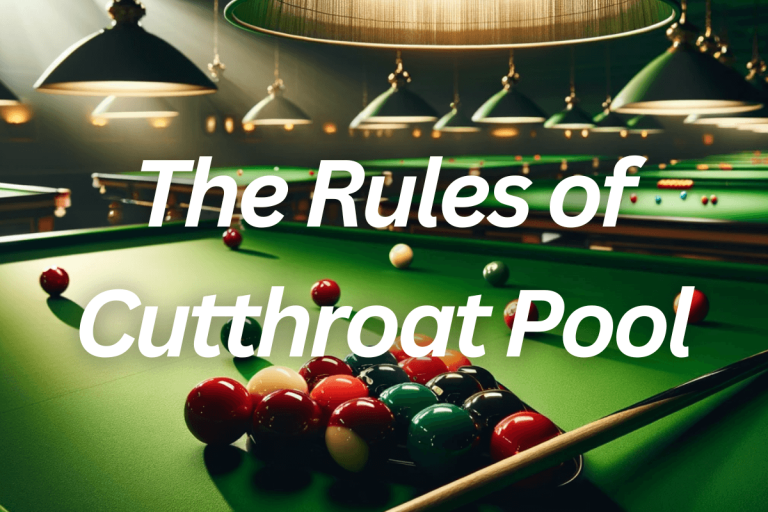10-Ball vs 9-Ball Pool | Choose your exciting game (2024)
In the meticulous world of 10-Ball, precision, and strategic foresight reign supreme, offering a nuanced challenge that tests the limits of skill and strategy. Contrastingly, 9-Ball shines with its brisk pace and dynamic gameplay, where intuition and bold plays can swiftly turn the tables. The 10-Ball vs 9-Ball guide illuminates the unique allure and objectives of each game, setting the stage for an in-depth understanding of these beloved billiard disciplines.
10-Ball Pool: A Comprehensive Overview
10-Ball pool, a refined variation of the traditional cue sport, presents an intricate blend of strategy, skill, and precision. The game’s core objective is clear: players must pocket the balls in numerical order, culminating with the 10-ball, but only after legally contacting the lowest-numbered ball on each shot. Unlike its cousin, 9-ball, 10-ball forbids the instant win by pocketing the 10-ball off the break, adding a layer of complexity and ensuring a more deliberate, strategic progression of the game.
The strategic depth in 10-ball is profound. Players must navigate the table with foresight, often planning several shots. Positional play is paramount; it’s not just about pocketing balls but doing so in a way that sets up the next shot, maintains control of the table, and limits opportunities for your opponent. Safety plays, where the cue ball is positioned to limit the opponent’s next shot, are critical and often used to force errors or create more favorable conditions for future shots.
A successful 10-ball pool player is one who not only excels in shot precision but also demonstrates a keen understanding of cue ball control, break strategies, and defensive tactics. Mastering 10-ball involves a balanced approach to both offense and defense, knowing when to take the shot and when to play it safe. It’s a game where every move counts, every shot is deliberate, and the truly skilled players shine not just through their ability to pocket balls but through their strategic prowess and mental acumen.
9-Ball Pool: A Dynamic Challenge
9-Ball pool, renowned for its thrilling pace and dynamic gameplay, offers a stark contrast to the more methodical 10-ball. The essence of the 9-ball is encapsulated in its fundamental objective: players must pocket the balls in sequential order, from 1 to 9, with the game culminating in potting the 9-ball. However, the twist lies in the rule that any ball can be pocketed as long as the lowest-numbered ball is hit first, often leading to creative shot-making and high-risk, high-reward strategies.
The fast-paced nature of 9-ball makes it a favorite among spectators and players alike. The game is aggressive and demands not just precision, but also the ability to think and act quickly. Each shot can potentially turn the tide of the game, with players consistently on the lookout for opportunities to pocket the 9-ball through combinations or carom shots after striking the lowest-numbered ball.
The break shot in 9-ball isn’t just the commencement of a game; it’s a strategic tool, a potential game-winner. A powerful and well-placed break can scatter the balls favorably, possibly even pocketing the 9-ball directly or setting up for a swift clearance. Understanding and mastering the break is a cornerstone of high-level 9-ball play.
10-Ball vs 9-Ball: Distinguishing Features
In the intriguing comparison of 10-Ball vs 9-Ball, each game carves its niche through distinctive features, from table setups and initial breaks to nuanced rules and strategic approaches.
Table Setups and Initial Breaks
10-Ball: The game starts with ten balls arranged in a triangle formation. The 10-ball is placed at the center, adding a layer of predictability to the break. Players aim for a break that disperses the balls while retaining control, setting the stage for a strategic game.
9-Ball: A diamond rack is used to set up the first nine balls, with the 1-ball at the apex on the foot spot and the 9-ball at the center. The break is crucial and more offensive, often aiming to pocket balls or strategically position the cue ball for an aggressive follow-up.
Rule Variations and Gameplay Impact
10-Ball
- Players must call their shots, adding a layer of intentionality and reducing the element of luck.
- The requirement to pocket the 10-ball last elongates the game, allowing for more back-and-forth and a gradual build-up of strategic plays.
9-Ball
- The game permits slop shots (unintended pockets), often leading to quicker and more unpredictable outcomes.
- The ability to win any time by pocketing the 9-ball makes every shot potentially game-deciding, intensifying the pressure on each stroke.
Divergent Strategies
In 10-Ball
- The game demands meticulous planning and precision. Players focus on shot accuracy, cue ball control, and safety plays, utilizing a defensive yet intentional approach to outwit opponents and secure the table.
- Breaks are more about control and setting up the subsequent play, rather than aggressive pocketing.
In 9-Ball
- Aggression and risk-taking are often rewarded. Players adopt a more assertive style, capitalizing on every opportunity to pocket the 9-ball.
- The break shot is a pivotal moment, with players aiming for power and spread, seeking either an immediate pocketing of the 9-ball or a favorable table layout for a swift clearance.
Equipment and Accessories in 10-ball and 9-ball
When it comes to equipment and accessories, both 10-ball and 9-ball pool games share many commonalities, but certain nuances can optimize your play for each specific game.
Cues
10-Ball Cues: Players may prefer cues that offer greater control and precision for strategic shot-making. A cue with a medium to the stiff shaft can provide the accuracy needed for the careful placement of the cue ball and nuanced shots.
9-Ball Cues: Break cues are particularly important in 9-ball due to the significance of the opening shot. Players often opt for a break cue that is heavier and stiffer, providing the power needed to scatter the balls effectively. For the game itself, a cue that offers a balance between control for precision shots and enough power for aggressive play is ideal.
Balls
10-Ball and 9-Ball Sets: The ball sets for both games are essentially the same, consisting of the standard numbered balls (1-9 for 9-ball, 1-10 for 10-ball). The quality of the balls can affect play, with high-quality, well-balanced balls offering more consistent behavior on the table.
Cue Ball: Some players prefer a cue ball with a built-in red dot or logo, which can help in visualizing the spin and trajectory of the ball after being struck.
Table Features
Cloth: The speed and playability of the cloth can influence game style. Faster clothes may benefit the aggressive, fast-paced nature of 9-ball, while slightly slower cloth can complement the strategic, calculated play in 10-ball.
Pockets: Tighter pockets can make 10-ball more challenging and strategic, as precision becomes even more critical. In contrast, slightly larger pockets might suit 9-ball, accommodating the aggressive, fast shot-making style of the game.
Accessories
Racks: In 10-ball, a triangle rack is used, while 9-ball utilizes a diamond-shaped rack. Ensuring a tight rack is crucial in both games, as it affects the break and the subsequent spread of the balls.
Chalk: Quality chalk is essential for both games to ensure a good grip on the cue ball, reducing miscues and enhancing spin and control.
Cue Tips: The choice of cue tip (soft, medium, hard) can vary based on player preference and the type of shots commonly played in either game. A medium tip offers a balance of control and versatility, suitable for both 10-ball and 9-ball.
Common Mistakes and Strategies for Improvement in 10-Ball and 9-Ball
Both 10-ball and 9-ball, while rich in strategic depth and thrilling gameplay, are also games where common mistakes can significantly impact outcomes. Understanding these errors and adopting strategies for improvement can elevate your play and help you gain an edge over your opponents.
Common Mistakes in 10-Ball
Poor Positional Play: Failing to plan several shots can leave players without viable options, forcing difficult shots or turnovers.
Strategy for Improvement: Practice drills that focus on cue ball control. Plan your shots in sequences, always thinking 2-3 shots ahead.
Overlooking Defensive Plays: Being overly aggressive and not utilizing safety plays can give opponents easy opportunities.
Strategy for Improvement: Incorporate safety shots into your practice sessions. Learn to recognize situations where a defensive play can offer a strategic advantage.
Neglecting the 10-Ball Setup: Rushing to pocket the 10-ball without proper setup can lead to missed opportunities or turnovers.
Strategy for Improvement: Practice endgame scenarios. Focus on positioning the cue ball to ensure a high-probability shot on the 10-ball.
Common Mistakes in 9-Ball
Inconsistent Breaks: A weak or poorly aimed break can fail to pocket a ball or scatter the balls unfavorably, setting up opponents for easy runs.
Strategy for Improvement: Work on your break technique. Experiment with different speeds and contact points on the cue ball to find the most effective break for your style.
Overlooking the Cue Ball’s Path: Failing to anticipate the cue ball’s path after contact can lead to fouls or unintended positioning.
Strategy for Improvement: Visualize the cue ball’s path before every shot. Practice controlling the cue ball’s speed and spin to enhance your positional play.
Rushing Shots: The fast pace of 9-ball can lead to hasty decisions, resulting in missed pots or poor positioning.
Strategy for Improvement: Slow down and assess the table before each shot. Develop a pre-shot routine to ensure consistent and thoughtful shot-making.
Conclusion
10-ball vs 9-ball. Each game offers its unique challenges and thrills, honing a diverse set of skills from strategic depth in 10-ball to the dynamic pace of 9-ball. We encourage you to dive into both games, enriching your pool experience and crafting a comprehensive skill set. Whether strategizing in 10-ball or adapting swiftly in 9-ball, your mastery on the table awaits.
FAQs
How does the break shot differ in 10-ball compared to 9-ball?
In 10-ball, the break is more about control and positioning, setting up the subsequent play rather than pocketing balls. The strategy involves dispersing the balls while maintaining a controllable cue ball. In 9-ball, the break is more aggressive, focusing on power and spread, with the potential to pocket the 9-ball directly or set up for a rapid clearance of the table.
How important is ball selection and sequence in 10-ball compared to 9-ball?
In 10-ball, ball selection and sequence are critical due to the call-shot rule. Players must strategically plan their shots, ensuring they not only pocket the called ball but also position the cue ball for the next shot. In 9-ball, the sequence is predetermined as players must hit the lowest-numbered ball first, making the game more about shot execution and cue ball control to navigate the table efficiently.
How does the call-shot rule in 10-ball impact the game compared to 9-ball?
The call-shot rule in 10-ball demands a higher level of precision and accountability. Players must not only pocket the intended ball but also announce the specific pocket. This rule minimizes the element of luck and encourages deliberate, strategic play. In contrast, 9-ball does not require calling shots, allowing for a faster pace and the possibility of unintentional, yet advantageous, pockets (slop shots).
How does the strategy differ in playing 10-Ball compared to 9-Ball?
In 10-Ball, the requirement to call each shot demands a higher level of precision and strategic planning, as players must not only execute the current shot but also consider the positioning for subsequent shots more carefully. This contrasts with 9-Ball, where players can benefit from fluke shots and the game generally moves faster due to the fewer balls and the lack of need to call shots. Consequently, 10-ball tends to favor players with strong shot-making ability and strategic foresight, while 9-ball can be more unpredictable and fast-paced.







